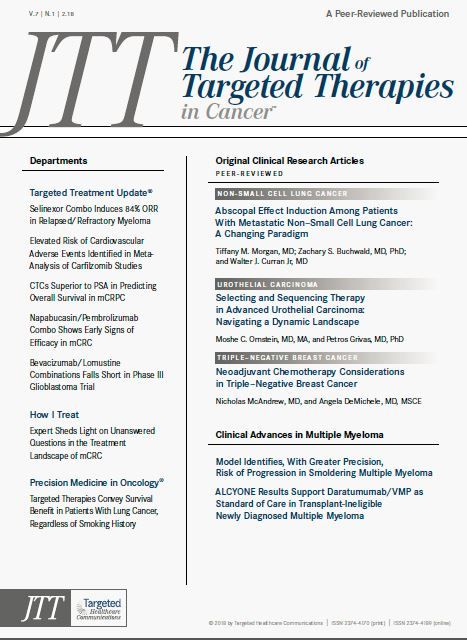Abscopal Effect of Radiotherapy: Reality or Urban Legend?
<strong>IN THIS ISSUE, INVESTIGATORS FROM</strong> Emory Winship Cancer Institute describe their experience with the so-called “abscopal effect,” which describes the ability of locally delivered radiation therapy to trigger distant antitumor effects. R. H. Mole, BM, FRCP, first coined the term abscopal effect as “an action at a distance from the irradiated volume but within the same organism” in 1953.
Robert L. Ferris, MD, PhD
IN THIS ISSUE, INVESTIGATORS FROMEmory Winship Cancer Institute describe their experience with the so-called “abscopal effect,” which describes the ability of locally delivered radiation therapy (RT) to trigger distant (systemic) antitumor effects. R. H. Mole, BM, FRCP, first coined the term abscopal effect as “an action at a distance from the irradiated volume but within the same organism” in 1953. However, most reports of the abscopal effect of RT alone noted that the majority of reported cases occurred in immunogenic tumors such as renal cell carcinoma and melanoma, where spontaneous regressions can occur. Indeed, documented evidence for the abscopal effect due to conventional RT has been relatively rare, outside of preclinical animal models. However, with the continued development and use of immunotherapy strategies incorporating combinations of targeted immunomodulators and immune checkpoint blockade with RT, the abscopal effect is becoming increasingly relevant in less immunogenic epithelial cancers, now that FDA approval of antiPD-1 antibodies is relative commonplace, permitting a greater population to be treated with both RT and immunotherapy.
Interestingly, RT was considered immunosuppressive secondary to reduced lymphocyte counts, which were attributable to older, less conformal RT techniques that radiated the bone marrow and/or circulating blood cells within the treatment portals. RT also can cause “immunogenic” forms of tumor cell death, leading to the release of inflammatory mediators HMGB-1 and ATP, and to the translocation of danger signals to the cell surface. Professional antigenpresenting cells, such as dendritic cells (DCs), bind to these molecules to enhance antigen cross-presentation and T-cell priming. RT also promotes DNA release from dying cells, which can also activate the stimulator of interferon gene pathway in DCs, initiating type I interferon production and enhancing DC priming.
However, despite elegant theoretical mechanism of systemic immune effect(s) of RT, abscopal effects are actually quite rarely observed. This may be due to the counteracting signals generated by RT, with both stimulatory as well as suppressive effects. With broader use of cancer immunotherapy, including innate immune stimuli such as toll-like receptor agonists and cytokines, the abscopal effect is likely to be reported with increasing frequency and in less immunogenic tumors. The difficulty lies in designing trials to obtain tumor specimens from distant tumor regressions, from the local site of RT. This lack of tissue biopsies limits our ability to confirm immune effect(s) driving those systemic responses, far from the site of local RT. A second consideration is the type of RT, whether lower-dose fractionated RT (1.8-2 Gy/fraction for 30 to 35 fractions) or stereotactic courses of RT (6-8 Gy/fraction for 3 to 5 fractions). The latter has been associated with an optimal balance of countervailing effects, promoting immunostimulatory benefits of RT and decreasing lymphocytedepleting effects.

Biomarker Testing Paves the Way for Better Targeted Therapies in NSCLC
April 16th 2024At a live virtual event, Edward S. Kim, MD, MBA, discussed the evolving landscape of biomarker testing before making treatment decisions for patients with early-stage non–small cell lung cancer (NSCLC).
Read More